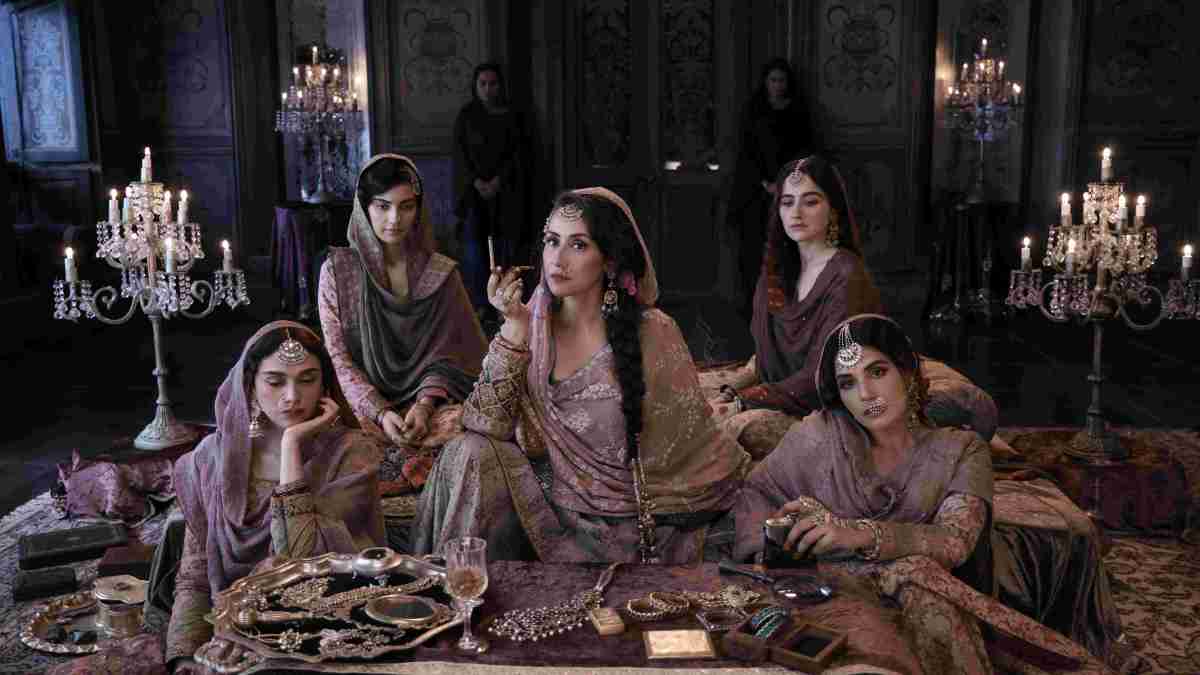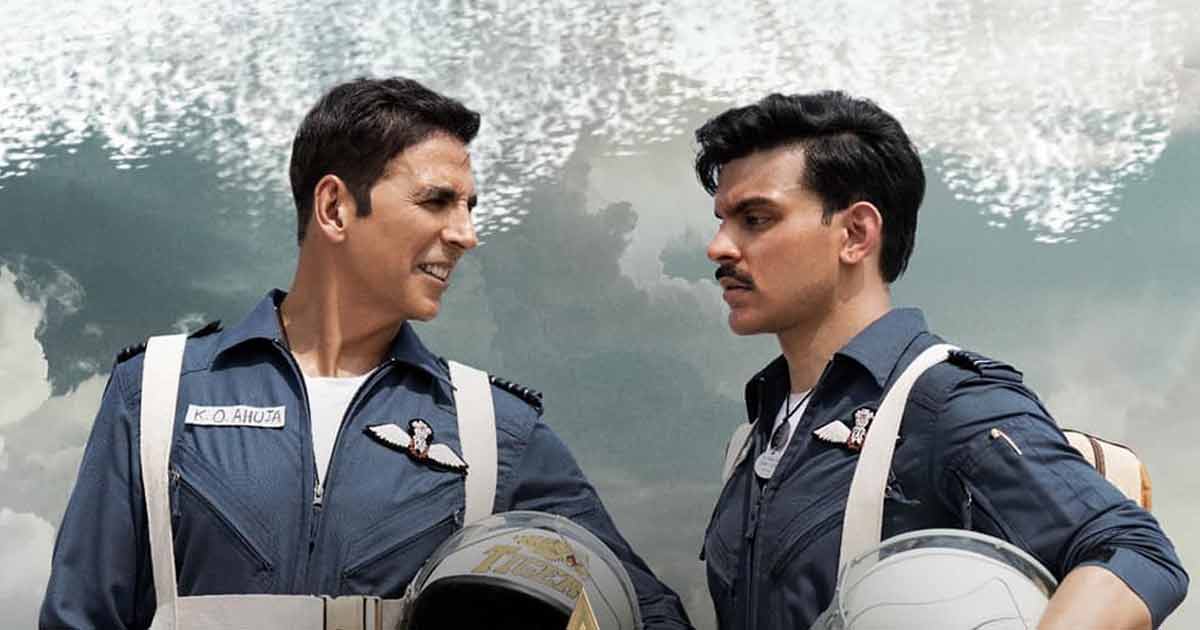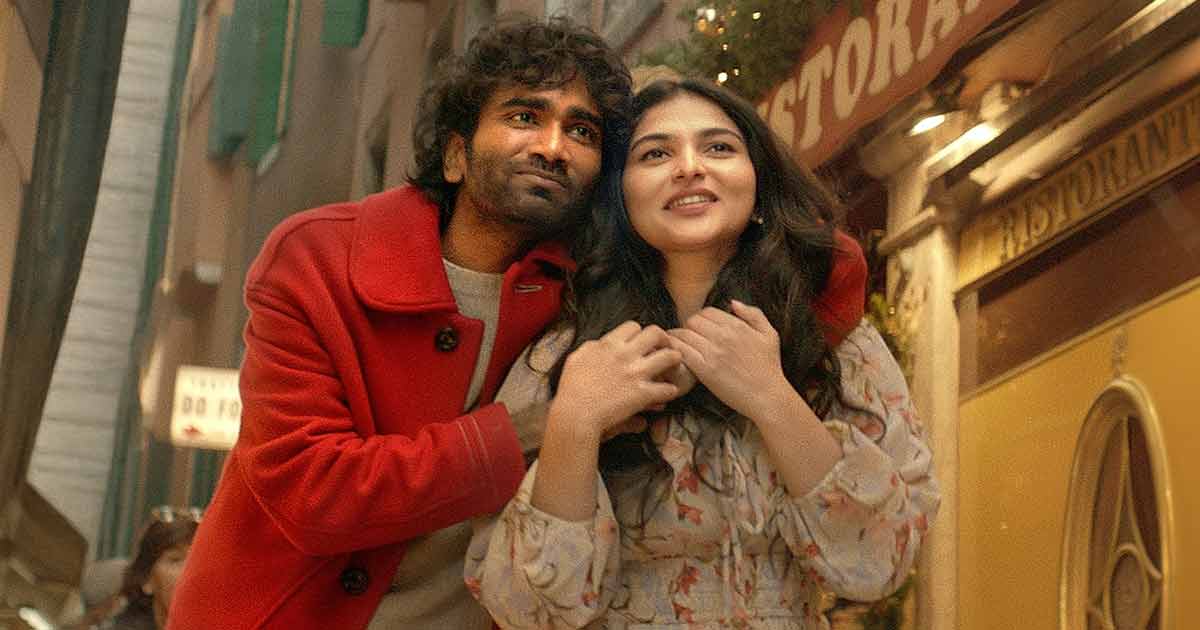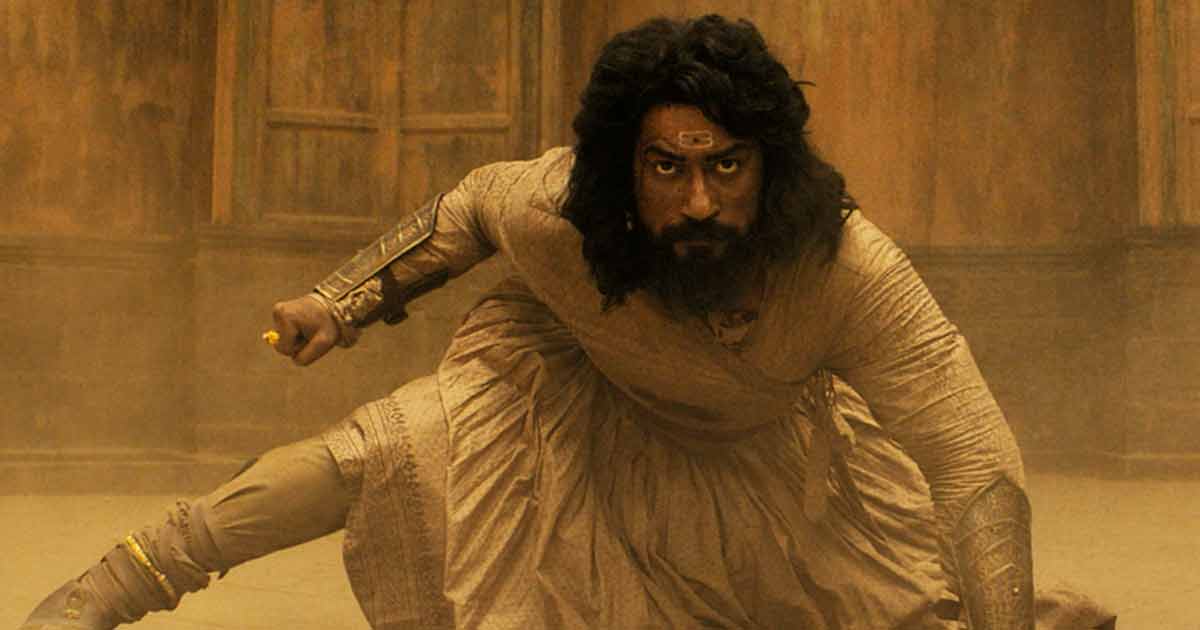
Does Heeramandi of Pakistan matter to new India? – Beyond Bollywood
The political tensions aside, Sanjay Leela Bhansali’s cinematic portrayal of Heeramandi in pre-partition India, and the central characters, may evoke a profound cultural shock. Manisha Koirala shines as the finest heera, while Sharmin Segal. Shruti Sharma emerge as uncut diamonds.
Rating: ⭐️⭐️ (2 / 5)
By Mayur Lookhar
Sanjay Leela Bhansali’s works transcend boundaries, often standing out for their grandeur, music, but above all, gripping drama. He’s a filmmaker who unites both the masses and the classes. We considered his last flick, Gangubai Kathiawadi [2022], to be his most avant-garde cinema. Two years later, Bhansali forces you to change that view with Heeramandi, his debut web series, which premiered on Netflix on 1 May.
The early buzz surrounding it hasn’t been entirely favorable. However, a few days later, the typical praise for its visual splendor emerged.
How has Heeramandi struck this writer? A week may be too late for a review. Of course, binge-watching can be energy-sapping. It’s not advisable for this writer. So, yours truly watched the eight episodes, across four days.
No point in dissecting the story, but let’s get straight to a few scenes that still linger in the mind:
1 Mallikajaan, a mother and the madam of Heeramandi, who is cold and compelling her young daughter to follow in her footsteps in becoming a courtesan.
2 Qudsia, a grandmother who orders her handsome grandson to sit on her lap. She even remarks, “Agar mard ka aisa husn ho, toh khuda aurat ko haya na de.” Earlier, grandma even cheekily tells Tajdar to consider paying a visit to Heeramandi.
3 Then there’s Waheeda, who is crestfallen after seeing her daughter take away her patron Nawab.
4 Swinging for vested interests is the hallmark of Bibbojaan and Fareedan.
Phew, imagine how the ‘sanskari’ viewer would be hyperventilating watching such drama. But let’s cut the nonsense. Truth be told, it’s often the so-called sharif and sanskari men who throng to the old and new Heeramandis of the world.
There’s no place for any moral argument, but the nonchalance with which these characters go about their lives is perhaps culturally shocking for many in present-day India. More worryingly, such representations run the risk of forming opinions about certain cultures.
How do you perceive the likes of Qudsias, Mallikas, and Bibbojaans? Was the 1940s Heeramandi more liberal and feminist, especially in its views on sexuality? Holding such views would be akin to fake feminism. While women in Heeramandi may strike as freebirds, they are actually prisoners of patriarchy. Without the lusty Nawabs, there would be no Heeramandi.

This writer recalls a brief meet with Moin Beg last year. Beg is the man who conceived Heeramandi. There was a gleam in his eyes, as he talked about visiting Pakistan and how women from Heeramandi were no sex slaves, but gifted artists living life on their terms – feared by the affluent Nawabs, and also the British. It painted Heeramandi as a world within worlds.
Bhansali seems to have stayed true to Beg’s vision of Heeramandi and its courtesans. However, in doing so, is the acclaimed filmmaker justifying the world of Heeramandi? To say they are artists is fine, but don’t these Shahi Mahals objectify women? It’s here that a Gangubai Kathiawadi differs from a Heeramandi. Or should we say, Kamathipura from Heeramandi. The topography notwithstanding, Gangubai and co. were dragged into the dreaded world of Kamathipura. So, a viewer is empathetic to Gangubai.

In contrast, the Mallikajaans, the Fareedans literally flaunt their Heeramandi cards. May be that explains why Beg, Bhansali refrain from using the derogatory word gashti (prostitute in Urdu). Bhansali doesn’t mask the frustrations of a queen about this Nawab-courtesan culture. So, can one be empathetic to Bhansali’s women from Heeramandi?

It’s challenging to empathize with a Mallikajaan or Fareedan, but a few second-generation girls from Shahi Mahal offer a ray of hope. Alamzeb [Sharmin Segal], Mallika’s younger daughter, who has a passion for poetry and is not eager to follow in the footsteps of her mother or older sister Bibbojaan [Aditi Rao Hydari]. Sharmin has a charming tone, captivating screen presence, fine command over Urdu, and delivers a stellar performance. Believe it, the camera falling in love with her has nothing to do with her privilege.
Then there’s Saima (Shruti Sharma), the daughter of Mallikajaan’s maid Fatto [Jayati Bhatia]. All Saima desires is to marry Iqbal Singh, the Sikh servant at Shahi Mahal. However, Singh doesn’t don the traditional pagdi.
Prajakta Ranta’s Shama has no qualms about stealing her mother’s patron, but when the critical hour arrives, the young girl stands up to the bully Nawab.
These young women, including Shama, epitomize a resolute drive for change. However, the stumbling block arises from within the walls of Shahi Mahal, where not an inch can move without the consent of the cold, heartless Mallikajaan.

Though this is Heeramandi, Manisha Koirala, who hails from a royal family in Nepal, certainly knows a thing or two about palace politics. “Heeramandi koi aadat nahi joh choot jaye, kismat hai” – When you come from this lineage of thought, you accept Heeramandi as your fate, and for all those who obey your command. Succession is seldom smooth here. Two decades ago, she wrested control of Heeramandi from Rehana [Sonakshi Rehana], the former chief courtesan. Heeramandi is now her fiefdom, and Mallikajaan operates as she pleases. It wouldn’t be inappropriate to dub her as the tyrant of Heeramandi. Mallikajaan’s actions may frustrate and anger you, but Koirala’s performance is a sheer tour de force.

Sonakshi Sinha’s long-cherished dream of working with Bhansali finally comes true. The wait proves worthwhile as she portrays two characters: Rehana and her daughter Fareedan. While much of Heeramandi builds towards a Fareedan versus Mallikajaan showdown, the battle lines are redrawn in the closing chapters. Sinha’s character isn’t initially endearing, but she ultimately redeems herself. Each woman grapples with her own conflicts, yet the shift towards a nari shakti finale doesn’t feel entirely organic.

Though a much-desired courtesan, Aditi Rao Hydari’s Bibbojaan is the patriot, a silent rebel who uses her sexuality to unearth secrets of the British Raj. Hydari showcased her talent impressively as Mehrunisa in her limited role in Padmavaat [2019]. Now, the experienced actor has seized this Heeramandi opportunity with both hands. The camera simply adores her, and Aditi, too, is aware of it as she gracefully navigates through the myriad worlds within Heeramandi, often sporting her million-dollar smile.

Speaking of opportunities, Sanjeeda Sheikh, who has long earned her bread through television, delivers a career-defining performance in a Sanjay Leela Bhansali production. She plays Waheeda, the younger sister of Mallikajaan. Bhansali has a knack for bringing out the best in his actors.
With the exception of Richa Chadha, who makes a cameo appearance, the rest of the female cast truly exceeds expectations. However, none seem entirely comfortable while dancing. What’s a Bhansali production without some mesmerizing dance number? Not everyone can match the skill of Madhuri Dixit or Aishwarya Rai, but if Heeramandi is projected as this elite Shahi Mahal of gorgeous, artistic women, Aditi, Sonakshi, and the others ought to have showcased their best footwork.
The limited playback music doesn’t quite meet the typical Bhansali standards, which perhaps also hindered its cast. Bhansali pays tribute to the great singer-poet Amir Khusro with his version of Sakal Ban.
All along, the focus has primarily been on the women of Heeramandi. But what do Bhansali’s male characters bring to the table? For starters, Heeramandi is unapologetic in its Nawab bashing. They are depicted as haughty, selfish, and lustful individuals who view the courtesans merely as objects of desire. This marks a departure from the romanticized portrayal of Mughals, Nawabs, and Maharajas in cinema of the past, where they were glorified as great lovers and warriors. Bhansali himself copped certain criticism for glorifying bigamy in Bajirao Mastani [2015] and Padmaavat [2018]. Heeramandi’s Nawabs would certainly call it hypocrisy.

Who portrays these Nawabs? Shekhar Suman as Khan Bahadur Zulfikar Ahmed, his son Adhyayan as Zoravar Ali Khan, Fardeen Khan as Wali Bin Zayed-Al Mohammed, and Nasirr Khan as Chaudhary saab. These actors, plucked from relative obscurity, embraced their roles in Heeramandi without hesitation. The depth of their characters may not be pivotal, but for these men, there was everything to gain and nothing to lose.

The two men who impress are Taha Shah Badussha and the relatively unknown actor Indresh Malik. Badussha earned praise for his portrayal of Murad in Zee5 series Taj: Divided by Blood. Here he plays Tajdar, the only son of an affluent Lahore royal Ashfaq Baloch [Ujjwal Chopra]. The Tajdar-Alamzeb romance triggers 1942: A Love Story nostalgia. Taha sports this Raj Kapoor-like mustache, but with a physique of a Dara Singh. Having studied law in London, Tajdar returns to India, hoping that it’s freed from imperialism soon. He doesn’t have high regard for Heeramandi and its courtesans, but rather surprisingly, gets a bit too close to the stranger Alamzeb in their first meet. Badussha only adds to his growing reputation with another confident performance.
Indresh Malik shines as Ustadji, the transwoman pimp of Heeramandi. Viewers are never quite sure about Ustadji’s loyalties.
Expectedly, British Indian actor Jason Shah and American find Mark Bennington play cunning British officers Cartwright and Henderson, respectively. The former doesn’t quite impress, but Bennington only adds to his growing reputation in the Indian entertainment space.

The fault with Heeramandi lies not in its actors, but in the story and its meandering screenplay. Honestly, it tests your patience. It’s not until the fourth episode that the screenplay finally grips you. Episode 4 and 5 are exceptions, providing some respite, but it’s back to square one with the remaining three episodes. Save for the surprise usage of the Sanskrit word uttaran, Vibhu Puri and Divya Nidhi’s dialogues are classy and reflect the period. So, is it ultimately a matter of screenplay and average direction? Let’s just say, even Sanjay Leela Bhansali is human.
As always, Bhansali’s works are a visual masterpiece. The world-class production design and cinematography are simply breathtaking. Thanks to the visual storytelling and competent cast, Heeramandi manages to draw viewers back despite its dull screenplay.
Nearly seven to seven and a half hours later, this reviewer is still baffled by one question: Does Heeramandi, now in Pakistan, matter to the new India? Separating politics from arts and sports is challenging, especially considering the history between the neighbors, which doesn’t paint a rosy picture. 77 years of India-Pakistan is marked by four wars, decades of Pak-backed terror into India, and religious fundamentalism in Pakistan. Does modern India truly want to know about Heeramandi? Truth be told, most Indians would consider Pakistan a good riddance.
Beyond the visual splendor, how do Indians connect with the world of Heeramandi? Lahore and Islamabad are Punjabi-dominated, with Muhammad Ali Jinnah, its founding father, emphasizing the idea of an Urdu-speaking Pakistan. While language doesn’t divide, Pakistan adhered to a two-nation theory. The Sikh representation is minimal, with Balraj perhaps being the lone Hindu character. Should Sanjay Leela Bhansali’s Heeramandi still intrigue present-day India?
History and conventional wisdom may suggest otherwise, but the mere concept of courtesans from Heeramandi uniting with unsung revolutionaries to fight for India’s freedom deserves recognition, even if it is fictional. Sabka khoon baha hai, so why should courtesans of Heeramandi not get their due. Let’s not overlook that these women are seeking liberation on multiple fronts – challenging patriarchy and slavery. While both India and Pakistan have long been liberated, the existence of many Heeramandis across the two nations serves as a reminder of how individuals like Mallikajaans, Bibbojaans, and Gangubais are still ensnared by the grip of lust and patriarchy. Heeramandi may not be the jewel we yearned for, but its heart is undoubtedly in the right place.
Publisher: Source link



